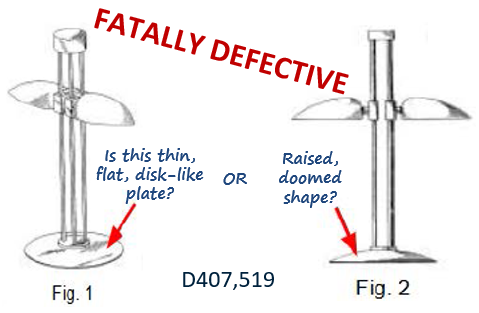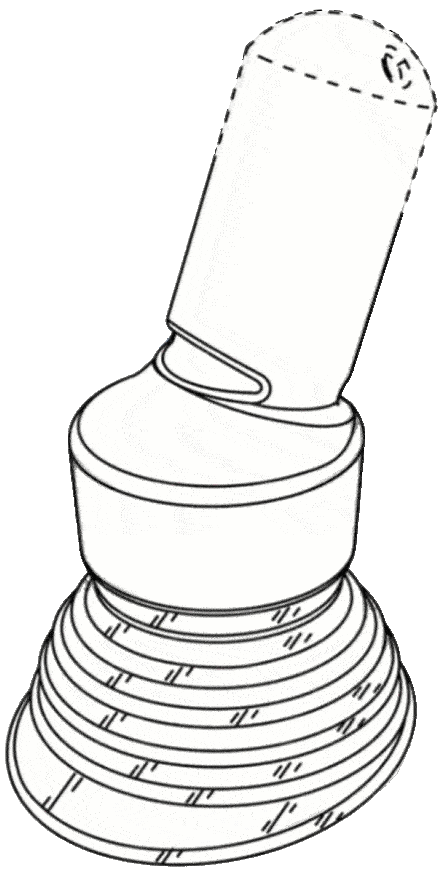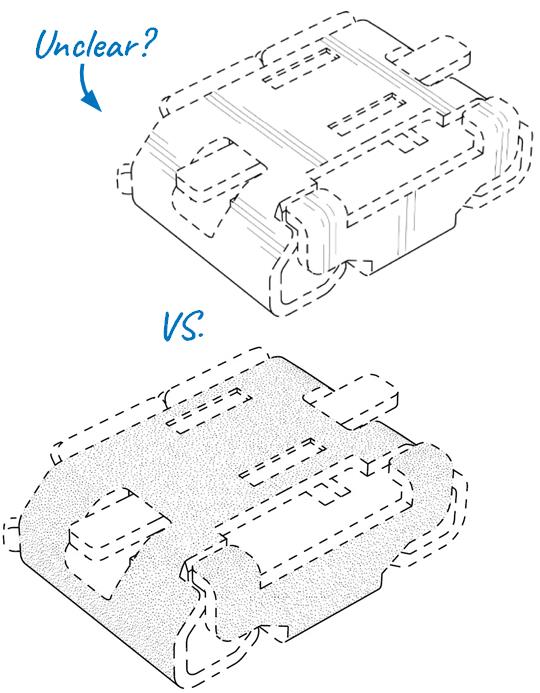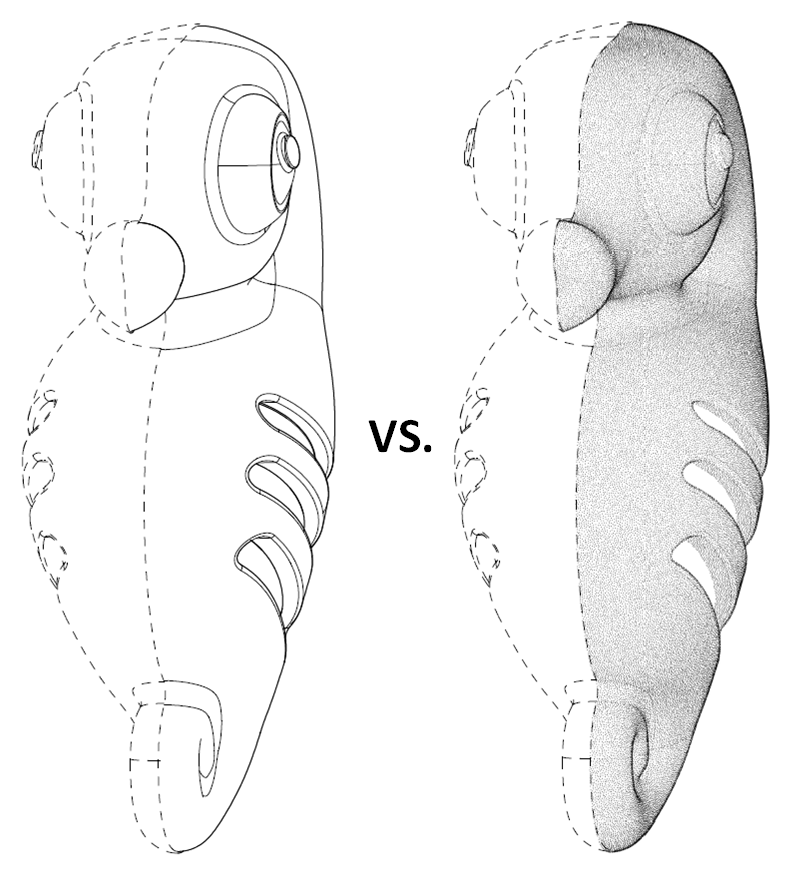Design Patent Drawings Have a Consistency Problem — Here’s Why It Matters
- IP DaVinci
- Article
- June 7, 2025
Table of Contents
⚖️ The Hidden Liability in Design Patent Drawings
Design patents live or die by their drawings. Yet drawing inconsistencies—subtle changes in shape, alignment, or detail across views—are everywhere. Most attorneys know that these issues could lead to a rejection, but far fewer realize that inconsistencies are a litigation liability too.

❗ Why Consistency Problems Are a Legal Risk
An inconsistent drawing invites multiple dangers:
- Rejections for lack of enablement or indefiniteness.
- Narrow claim interpretations when the figure is challenged post-grant.
- Invalidation under §112(f) due to ambiguity or perceived new matter.
- Weak infringement position when litigators can’t pin down the claimed design.
The risk isn’t just theoretical. In Lanard Toys v. Dolgencorp, minor inconsistencies between views weakened the plaintiff’s case. In Columbia Sportswear v. Seirus, even minor differences in depicted wave patterns became pivotal.
🔍 Where the Inconsistencies Come From
Manual Illustrator Variability
Different contractors working from sketches, photos, or misaligned blueprints often generate unaligned views.2D-to-2D Extrapolation
Creating new views from others by hand introduces geometrical drift—especially in perspective or isometric views.Photoshop Patchwork
Some illustrators touch up views individually, resulting in mismatched edges, hatching angles, or radius curves.Client-Supplied Reference Errors
Inventors often provide photos or CAD screenshots with perspective distortion that doesn’t translate well across views.
✅ What Attorneys Should Do Differently
Don’t settle for checking surface-level compliance. As the drawings are the claim, attorneys must enforce structural drawing integrity. Here’s what that means in practice:
- ✅ Require a single 3D model-based source for all views
- ✅ Compare all views side-by-side before filing
- ✅ Ask for a view alignment audit before submission
- ✅ Reject “stitched together” drawings where shading, angles, or lines don’t match
When your figure views don’t align precisely, the patent becomes vulnerable—at prosecution, litigation, and even during licensing.
🛠️ How We Solved This with STIPPLES
At IP DaVinci, we’ve developed STIPPLES—a drawing workflow that eliminates inconsistency at the source. Instead of building views one by one, we:
- Use a single 3D geometry for all views
- Automate projection rendering for perfect alignment
- Apply AI-guided stippling and shading for consistent texture
- Output fully aligned ready-to-file drawings
Every figure is internally coherent—no drift, no distortion, no litigation guesswork.

🎯 Want Drawings You Can Rely On in Court?
STIPPLES by IP DaVinci eliminates the inconsistencies that sink otherwise good design patents:
- 🔁 All views derived from a single model
- 🧠 AI-guided stippling and texture harmony
- 🛡️ Litigation-resilient geometry across views
- 🕒 Same-day delivery of ready-to-file packages
STIPPLES: Modern Design Patent Drawings, Without the Hassle
Learn how STIPPLES improves drawing quality, reduces ambiguity, and aligns with modern patent office expectations — all using a workflow you can review and control.


